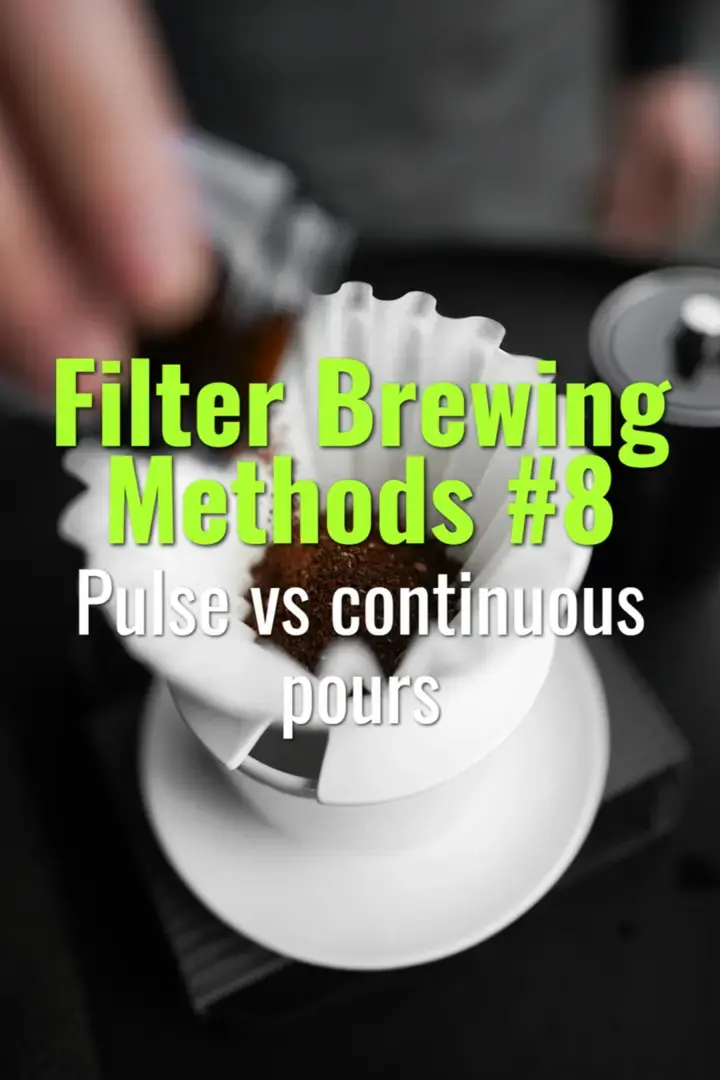Pulse vs continuous pours
How pulse and continuous pouring styles affect flow control, extraction balance, and flavor outcomes in filter brewing.
- Coffee Basics Nerds
- 1 min read

Pouring Strategies
-
Continuous Pouring:
-
A steady, uninterrupted pour (usually spiral-shaped).
-
Maintains consistent water level and extraction.
-
Produces clean, bright cups with good clarity.
-
Risks: Can cause channeling if stream is too strong or uneven.
-
Pulse Pouring:
-
Adds water in measured intervals (pulses), often between 50–100 g at a time.
-
Encourages agitation and turbulence, improving extraction uniformity.
-
Helps control brew time by managing drawdown pace.
-
Risks: Too aggressive pulsing can over-agitate fines and muddy the cup.
-
Flavor Differences:
-
Continuous pours → cleaner, lighter body, more clarity.
-
Pulse pours → richer body, sometimes more sweetness, but less clarity.
-
Practical Tips:
-
Match method to coffee: bright, floral coffees benefit from continuous; chocolatey or full-bodied coffees suit pulsing.
-
Use a gooseneck kettle for precision and consistency.
-
Adjust grind and pulse frequency to fine-tune total brew time (target ~2:30–4:00 minutes).
Summary
Pulse pouring increases agitation and body, while continuous pouring emphasizes clarity and cleanliness. Choosing the right strategy allows brewers to align flavor outcomes with the coffee’s character and desired profile.